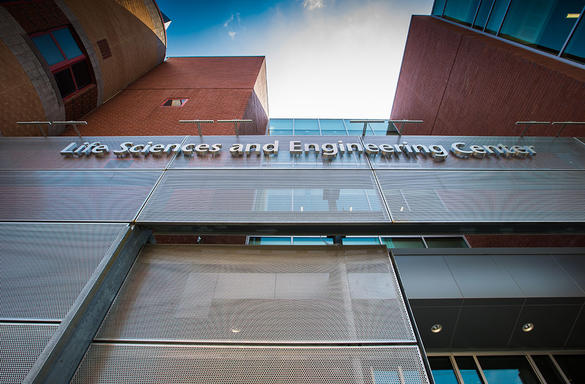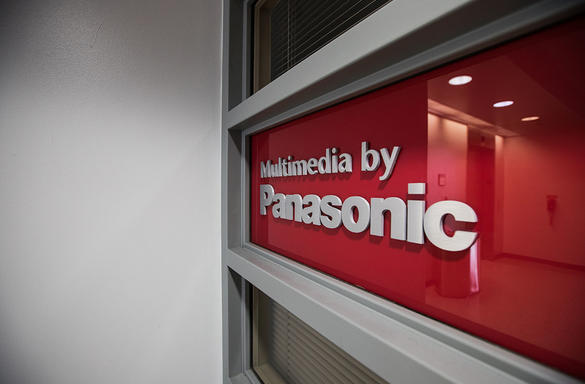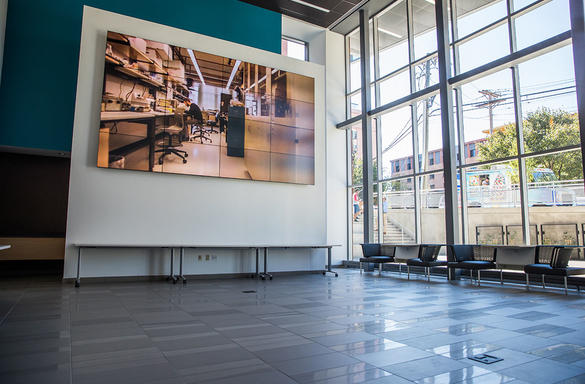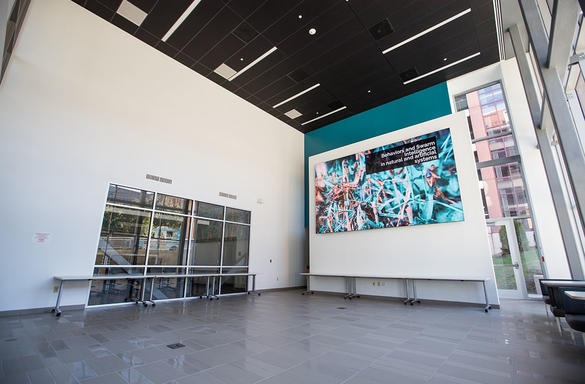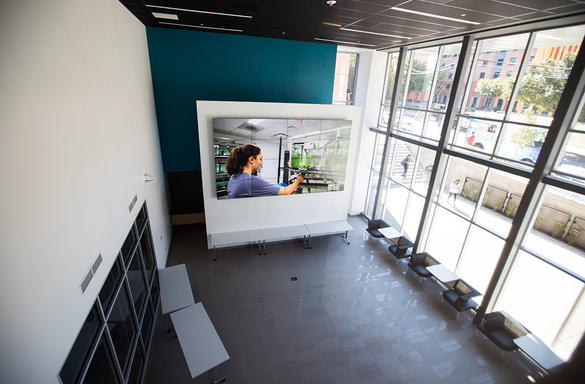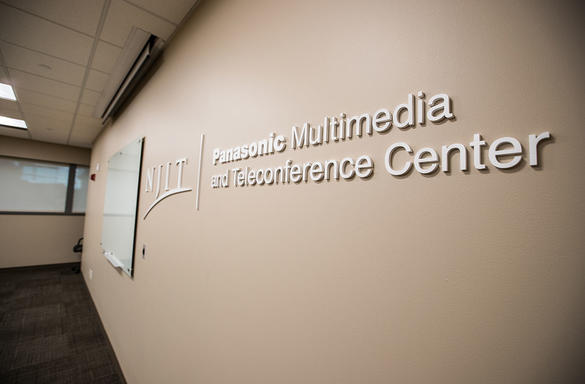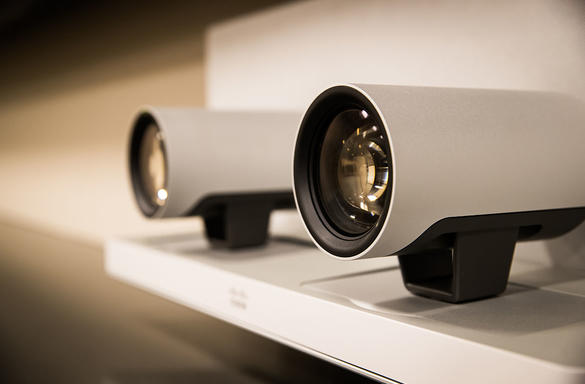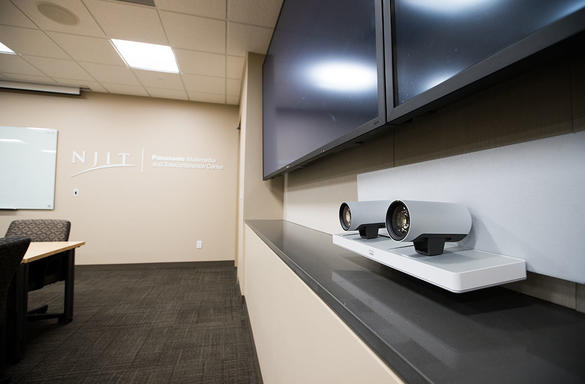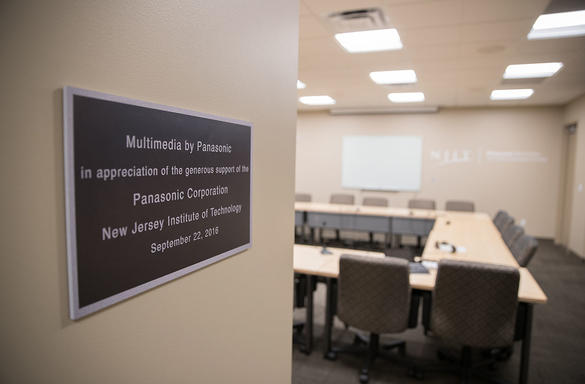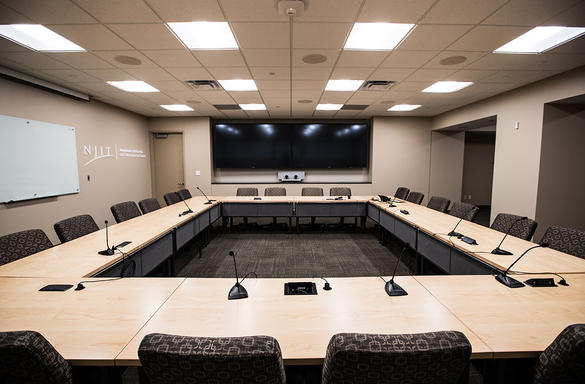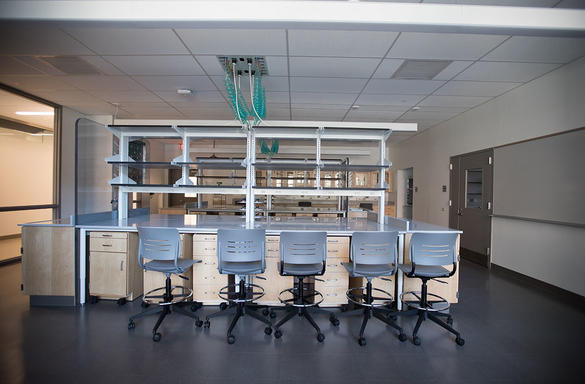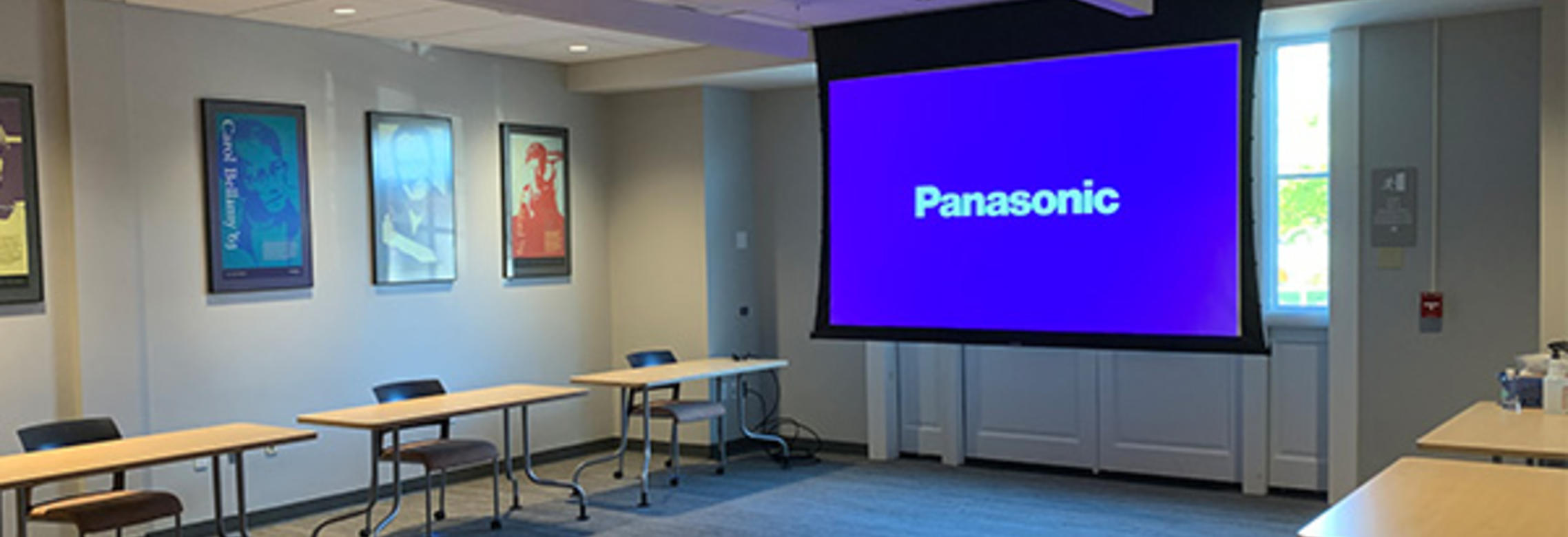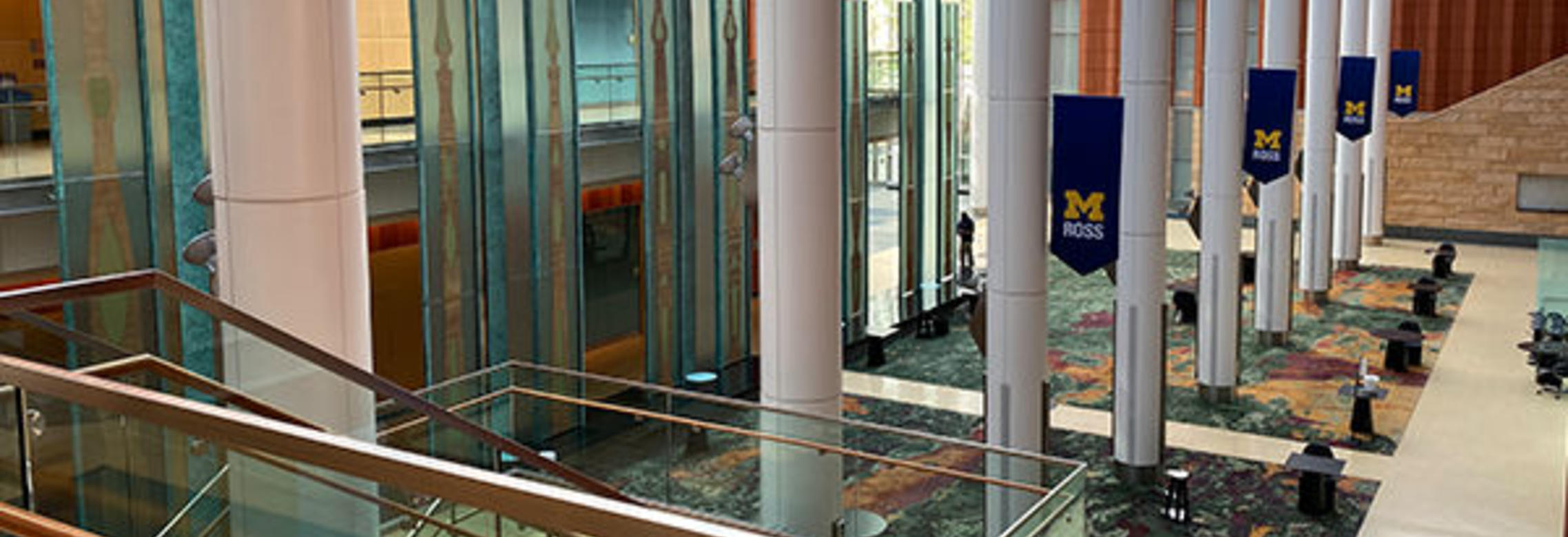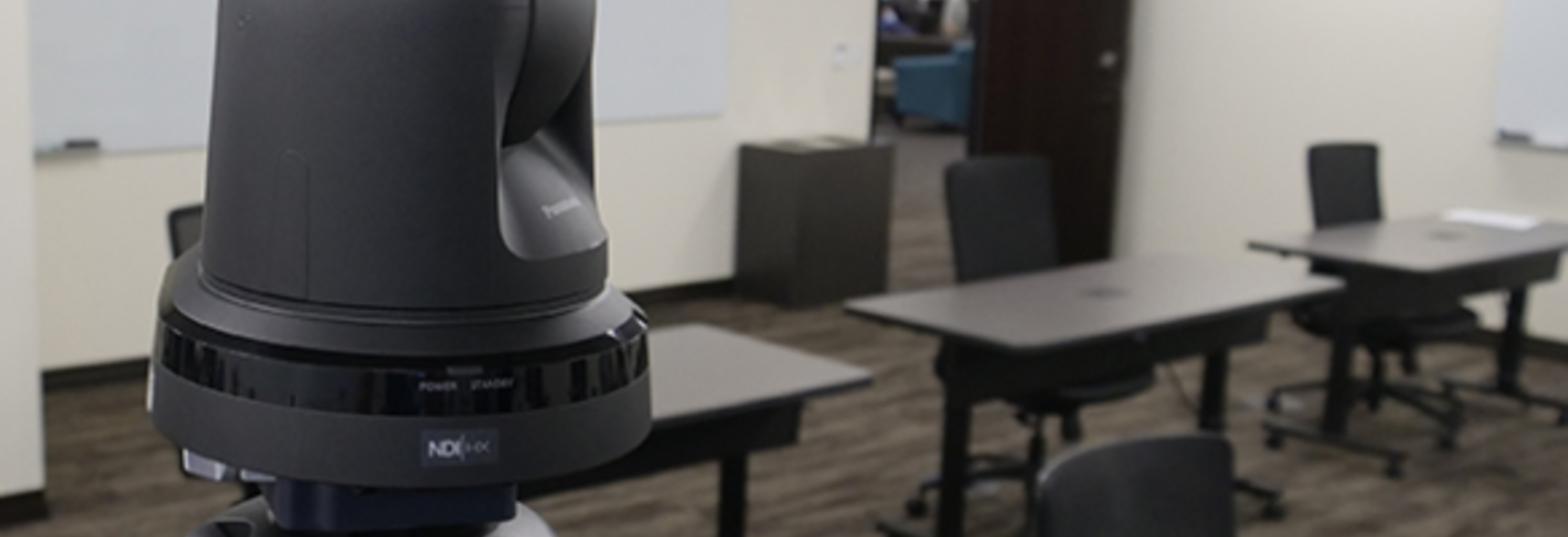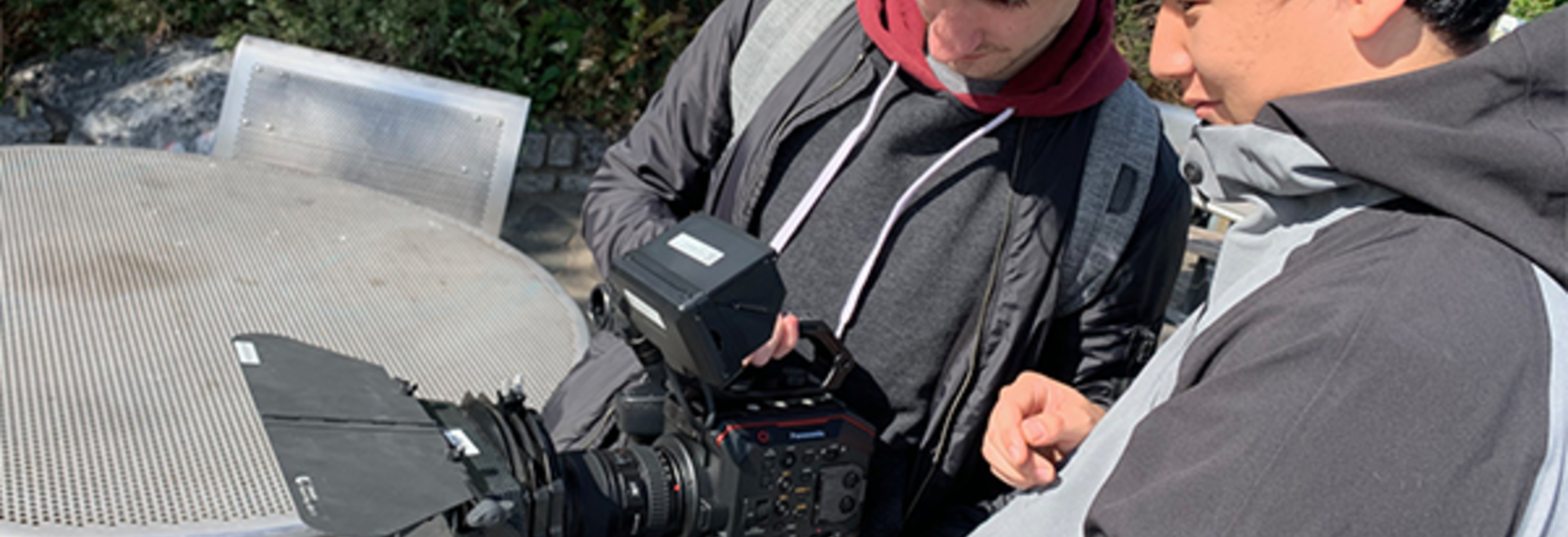New Jersey Institute of Technology
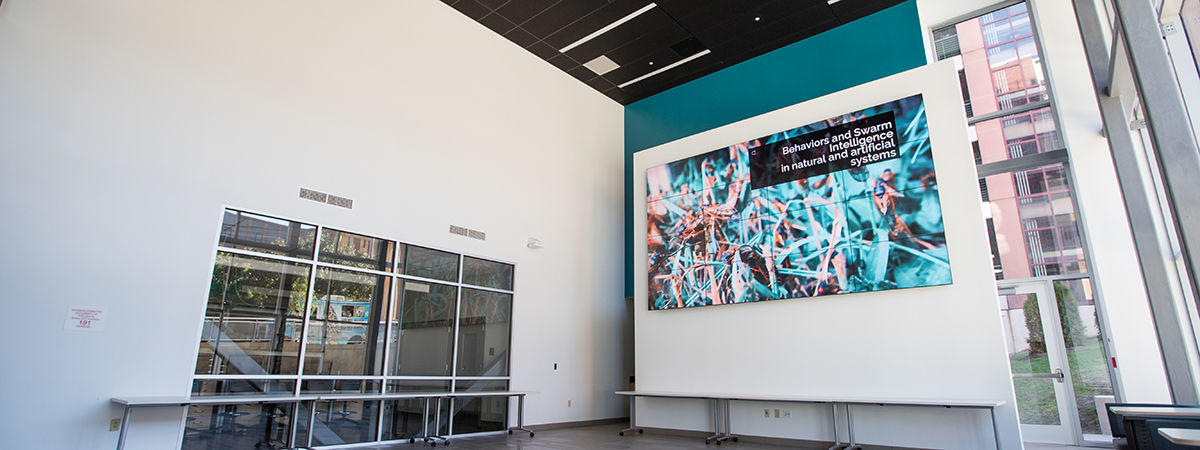
Founded in 1881 as the Newark Technical School, today’s New Jersey Institute of Technology (NJIT) comprises six specialized schools offering 50 bachelors’, 46 masters’, and 19 doctoral degree programs.
Currently spending approximately $140 million annually on cutting-edge applied research across multidisciplinary centers of excellence and specialized high-tech labs, NJIT’s classrooms exemplify what eighth president Dr. Joel S. Bloom describes as NJIT’s unique “edge in knowledge,” and are a testament to the school’s mission to set the bar for technology-enabled learning. As such, NJIT’s Digital Media experts are second to none in evaluating video equipment for a wide array of educational projects and purposes. That those experts rely on Panasonic to meet and exceed their rigorous requirements for video displays underscores the brand’s class-leading imaging, reliability, and support.
Challenges
To endow NJIT’s new Life Sciences and Engineering Center with advanced display technology for ad hoc teamwork centers and active-learning classrooms. Maximize use of the video displays in the technologically evolved Presidential Conference Room.
Solutions
Deployment of a 4x4 multipurpose indoor/outdoor video wall using sixteen 55-inch Panasonic TH-55VF1U Professional Displays. Ongoing installation of collaborative break-out room displays. Launch of the Institute’s first lab-style teaching unit featuring ten Panasonic 48-inch TH-48LFE8U Professional Digital Signage Displays and expanded use of twin 98-inch 4K Panasonic TH-98LQ70U LCD displays.
Results
Vastly improved communications between students and staff in Engineering Center buildings and the opportunity for professors to “break free” of lecterns and facilitate hands-on learning. Expanded ability to display high-definition lessons from an array of Bring Your Own Device (BYOD) traditional and mobile computing systems.
How can tech set students up for success?
Learn how to empower faculty with tools that position students for workplace success.
Deployed in the “Science Commons,” the primary entrance to NJIT’s recently opened Life Sciences and Engineering Center, the video wall, which serves as an indoor/outdoor viewable information system when it’s not displaying instructional videos, diagrams or collaborative works in progress, may be the hardest- working device on campus.
“Even without its tech-heavy labs and classrooms, the Life Sciences and Engineering Center epitomizes the word ‘creative,’” House says of the “something old, something new” architecture of the 48-acre campus’ newest landmark.
“What the architects did was seamlessly merge the new structure with the existing York Building (the former Science and Engineering Center) by physically connecting the two buildings and creating a central entrance between them,” House explains. “The aptly nicknamed ‘Science Commons’ is a large space right inside that access point. In addition to the Video Wall, the Commons contains two interactive Panasonic TH-65LFE8U 65-inch display screens with integrated network connectivity, USB media player, and one interim PC.
“The Wall can be ‘fed’ with inputs ranging from VGA to HDMI on the PC side to a full range of Android and Apple ports on the displays,’ House notes. “The idea, which was quickly tested and verified after the system’s April deployment, was to empower folks working on challenging projects to just kind of pass through and communicate about their work.”
In addition to materials and messages created by NJIT staff and students, the Video Wall, deployed and programmed by Panasonic reseller Avectus A/V Systems in nearby Lebanon, N.J., is fully compatible with traditional internet and cloud-based learning systems and individual class content from “distance lecturers” and other universities.
Building on its goal of creating clear sightlines and large-scale HDTV images throughout campus, NJIT equipped its Presidential Conference Room with side-by-side Panasonic TH-98LQ70U 98-inch 4k LCD display screens during a 2016 makeover.
“It’s just a fabulous room with a tremendous electronic reach,” House says. “In addition to its massive amount of Ultra HD video real estate, it’s also got a very high-end Cisco speaker-tracking-enabled telepresence system for flawless audio/video conferencing that makes it perfect for senior staff conferences, executive board meetings and use by high-profile organizations like the Air Force, other top-level military and government agencies, and the regional Red Cross board.”
House also highlighted the recently completed installation of “breakout rooms” on the first and second floors of the Central King building, a former high school which recently underwent a three-phase restoration.
“The breakout rooms use single Panasonic TH-55VF1U displays and Extron TeamWork® Systems with multiple ‘show me’ cables,” House says. “It’s actually a many-to-one system that allows multiple users to be plugged in at once with screen access determined by a simple button push on the cable. What’s really neat about it is that it replaces a switching console that requires a controller with a very simple cable switcher that can be controlled by the students themselves.”
NJIT’s Central King Building also is host to what is arguably the most innovative teaching experiment on campus, the Active Learning Classroom. Inspired by a prototype system developed at North Carolina State University, the Active Learning Classroom technology definitely severs the cord that has effectively bound teachers to the ‘sage on a stage’ model at the front of the classroom since the invention of the blackboard 216 years ago.
“Active Learning enables lab-style teaching,” House says. “It's anti-lecturing teaching. Instead it encourages students to pace their own learning with the teacher as a guide. The room contains 10 large, nine-person tables with built-in Panasonic TH-48LFE8U 48-inch displays and the students are divided into study groups and assigned a project and a table. The professor, carrying a wireless mic, moves from group to group critiquing here, commending there, and dispensing knowledge everywhere. If the professor sees something that she particularly likes or something that raises an issue that merits discussion, all she has to do is press a touch panel to push-deliver the image on the screen she’s viewing to the entire class.”
For 130 years, the New Jersey Institute of Technology has guided its students toward the kind of outside-the-lines thinking essential to innovation and progress. Its century-plus commitment to demonstrating and helping redefine the technological bounds of possibility has rendered it one of the most unique and valuable learning centers.

